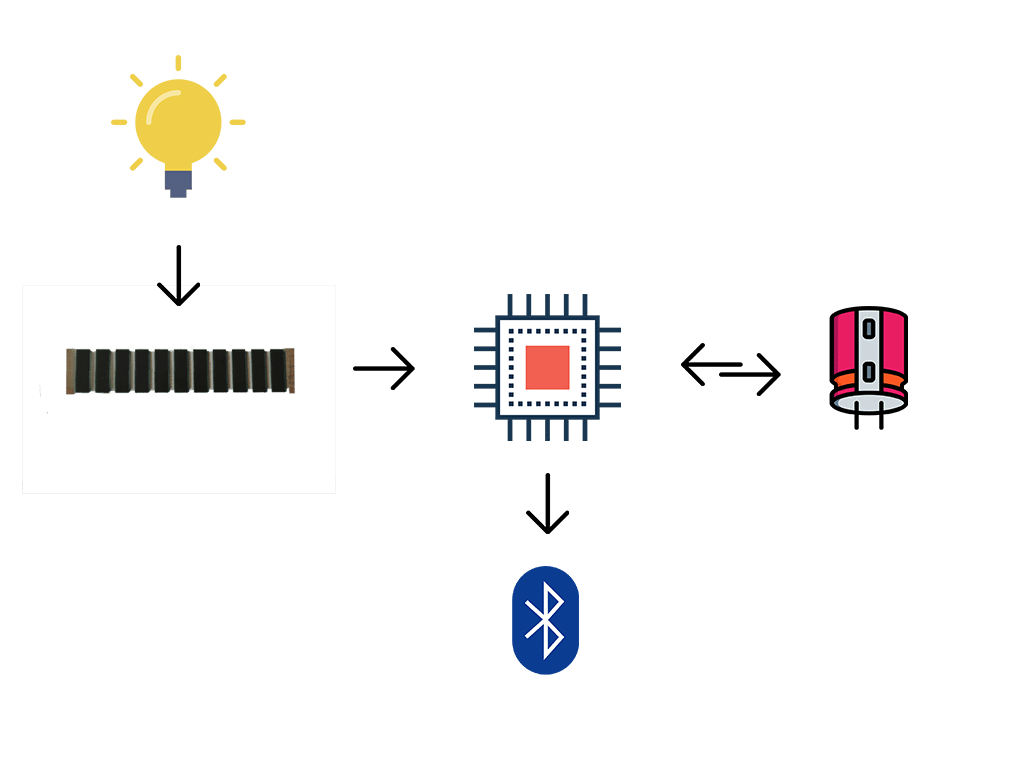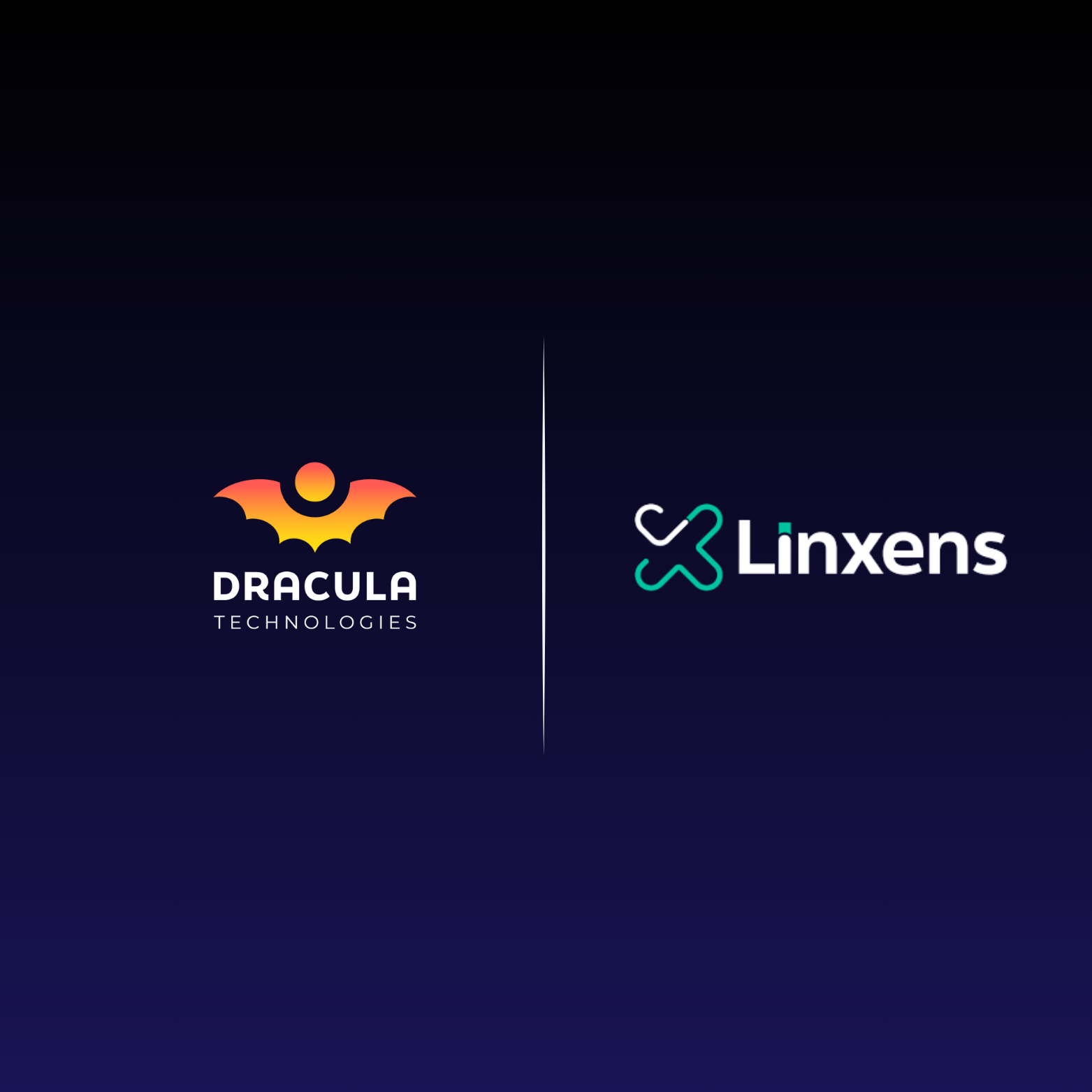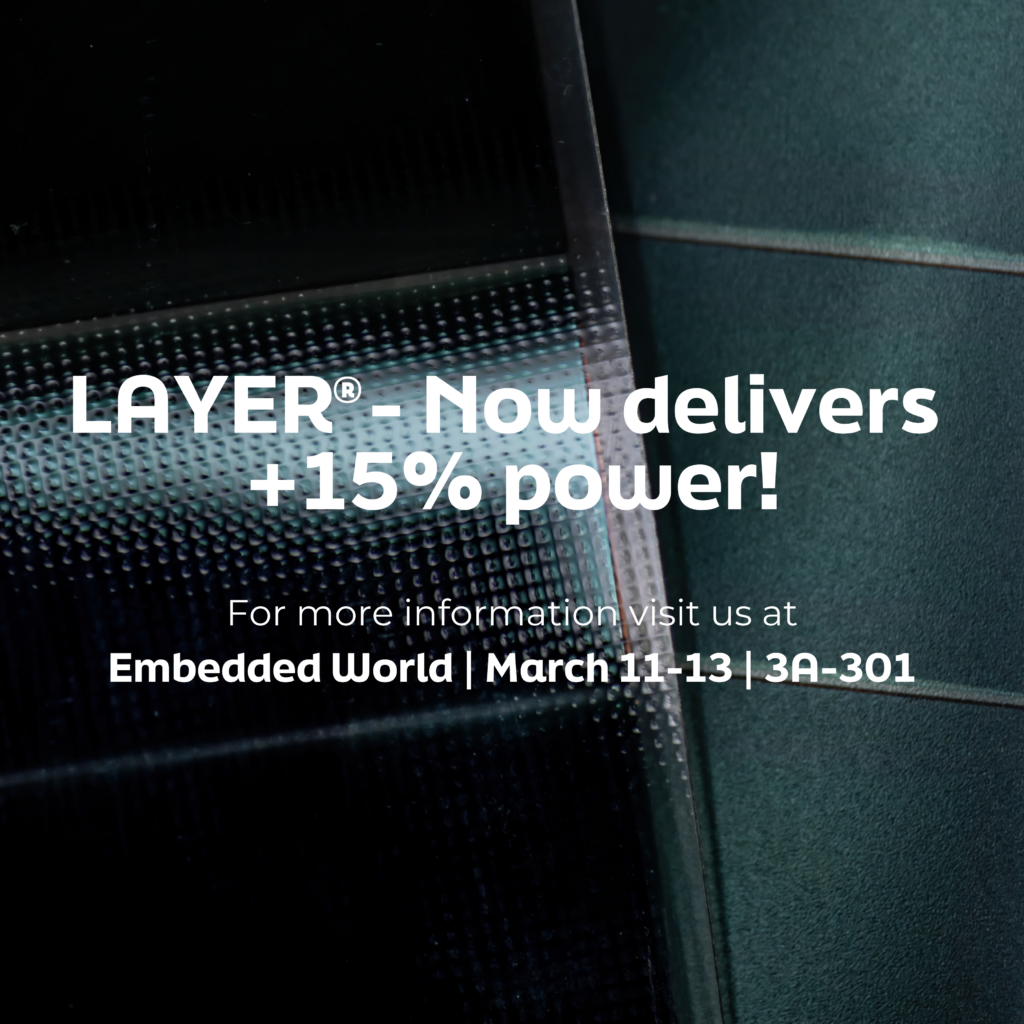LAYER® X Orange Labs
Autonomous BLE DATA transmission with Redbear nano
Dracula Technologies and Orange Labs have co-designed and co-developed an autonomous BLE device powered by LAYER® technology. It has embedded electronics such as a Nano red bear V2 board that allows BLE transmissions and temperature sensing thanks to an integrated sensor in the device. Data transmitted are visualized via a mobile application on Android OS. The electronic development and the mobile application front-end and back-end have been made in collaboration with Kaizen Solutions.
The mobile application shows the instant temperature (at each transmission) and the temperature curve as a function of time.
This device is powered by LAYER®, our organic photovoltaic module manufactured by inkjet printing.
The module is composed of 11 organic photovoltaic cells connected in series. The inkjet technology allows us to print on flexible substrates. As we can see in the picture, the LAYER® is wrapped around the cylinder which has a diameter of 32mm, flexibility is a real benefit for IoT manufacturers, it permits customization and IoT downsizing.
Here is the wiring diagram of the device

The scouting of low power cards by Orange Labs has identified two electronic cards for creating such an autonomous device :
– The harvester PMIC (Power Management IC) made by e-peas. It optimizes the power transfer from a harvester through a storage element and an application.
– A Nano redbear V2 with an embedded BLE transmission unit, connected to a temperature sensor.
Nano Redbear is not the lowest energy consumption device available on the market. The aim of this study was to realize a Proof of Concept prototype with electronic components that anyone can easily find on the market.
The programming of the RedBear Nano board was done with Arduino IDE. The test was performed in an environment of 300-400 lux, which is not bright but not dark either. For further information, low light conditions would be the average lighting of a bedroom (200 lux) and bright indoor lightning would be the average lightning of a living room (1000 lux).
Our LAYER® technology enables us to transmit data even in low light conditions thus being at its best performances at 1000 lux. For the case presented, the LAYER® supplies 1 mV per second at 1000 lux whereas the system consumes 13mV per transmissions. Considering the fact that we retrieve temperature framework every 15 seconds, our LAYER® technology allows autonomous temperature sensing devices.








